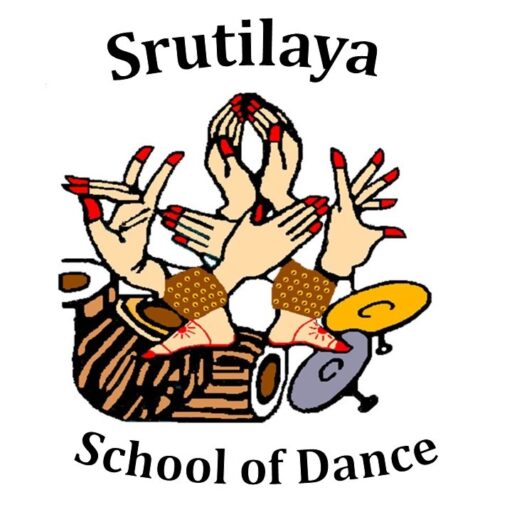Dance Ballets: Madhusri’s passion for choreographing and performing with her students has led to several dance ballets, including:
- Seven Wonders and Seven Virtues (2023): Our next production is on March 25, 2023. Stay tuned for more details!
- Uruvi (2022): Many of us know about Karna from the epic Mahabharata. But how many know about Uruvi, the wife of Karna, who sacrificed her happiness for his sake? In this first open-air dance drama, performing artists from Srutilaya School of Dance depict Karna’s story from a woman’s perspective and present the many faces of Uruvi – determined, angry, compassionate, and mature – as she navigates her life with Karna; performed by 40 students
- Amrapali (2019): Beautiful maiden turned to Buddhist Monk; performed by 35 students
- Yatra (2016): A traditional Margam choreographed innovatively as group dance performances and performed by 38 Srutilaya Arangetram graduates
- Trinities and Arabian Nights (2014): Dances depicting excerpts from the ancient stories in Tanjore, India to the unique tales from Arabian Nights performed by 20 dancers from Srutilaya in collaboration with other dance schools
- Odyssey (2013): A journey from past to present of Bharatanatyam in all its glory, commemorating 25 years of teaching dance by Guru Madhusri, performed by 36 students
- Shivanjali (2012): A rigorous traditional Bharatanatyam dance medley on the Lord of Dance performed in Chennai and New Delhi, India by 8 students
- Nostalgia (2011): A celebratory dance sequence on various Gods of India, commemorating the completion of 50 Arangetrams by Guru Madhusri Sethuraman. Performed by 37 Srutilaya Arangetram graduates who came from all over the United States
- Dances of Love (2011): The seven relationships of love – between mother and daughter, guru and sishya, etc. – blossom in the form of beautiful music and dance in this ballet performed by 40 students
- Seven Wonders (2009): A unique dance ballet depicting stories of love and war behind the birth of the Seven Wonders of the World – Bharatanatyam combined with other multicultural dances; performed by 48 students
- Dance Eclectica (2008): Different cultures were portrayed and celebrated in a dance mixture called Dance Eclectica, organized by Charity through Art (CHAART) Foundation in Allen, Texas; performed by 42 students
- Pandora’s Box (2007): Don’t open the Pandora’s Box – they say. What is the real story behind it? What happens if you do open it? This age old Greek mythology was brought to life at the Majestic Theater in Dallas by Srutilaya and other leading DFW Dance Schools; performed by 50 students
- King Ashoka (2006): Ashoka was one of the most popular kings of India and, interestingly, many of Ashoka’s achievements both on and off the battlefield were documented and communicated to the rest of the world through the writings of Xuan Zhang, a Chinese monk and explorer from the 6th century. Hence, the story of King Ashoka was enacted in dance form all over China; performed by 9 students
- Penn (2005): As a part of Tamil convention in the U.S., Madhusri choreographed the different stages of a woman’s life, from childhood to giving birth, using several compositions from ancient Tamil literature to modern day poets; performed by 35 students
- Uthama Chakaravarthy (2004): To mark the completion of 15 years of teaching dance, Madhusri choreographed a dance ballet depicting the various qualities required to be an ideal ruler – justice and wisdom, truthfulness and honesty, peace and non-violence were the attributes highlighted; performed by 30 students
- Krishna Narakasura (2003): Here, the importance of Diwali was brought about through the epic of Krishna slaying the evil demon Narakasura, and all the villagers rejoice and celebrate this occasion; performed by a group of 6 students
- Shankaram Madhavam (2002): The devotees of Vishnu and Shiva argue about who is the greater of the two Gods and praise their respective Gods. In the end, they realize that all Gods are equal and are just different manifestations of the underlying supreme being; performed by a group of 14 students
- Valli Kalyanam (1999): The story of the gypsy girl Valli’s marriage with Lord Muruga. This was a medley of classical and folk dances, performed by 40 students.
- Nava Rasa (1998): Portrayal of the nine different moods shown through different episodes from Indian Mythology based on songs in different languages, performed by 10 students
- Dashavatar (1996): The Ten Incarnations of Lord Vishnu using Jayadeva’s lyrical compositions, performed by 50 students
- Hari Hara Anjali (1995): Stories on Lord Vishnu and Shiva, performed by 35 students
- Krishna Leela (1994): Krishna as a child, lover and the Almighty. Various episodes performed to lilting music from North and South India, performed by 26 students
- Sneetches (1993): Dr. Seuss’s popular story choreographed in Bharatanatyam through a grant from the Iowa Arts Council and enacted in India and the U.S. by 5 dancers
- Ramayana (1992): The story of Lord Rama, the vanquisher of the evil demon Ravana; performed by 12 students
